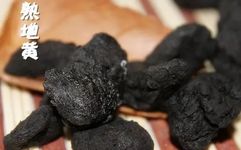The Efficacy and Uses of Rehmannia Glutinosa (Shu Di Huang) and Its Proper Consumption Methods
Sharing Health Knowledge provides you with health information Click below to follow for free↓↓↓ Rehmannia glutinosa (Shu Di Huang) is the root of the plant from the family Scrophulariaceae, specifically the Rehmannia or Huaiqing Rehmannia. The processing methods are recorded in the “Classic of Difficulties”. It is mainly produced in Henan and Zhejiang provinces of … Read more








